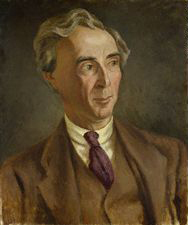Essai sur la Classification des Sciences. Par Edmond Goblot, Ancien élève de l’Ecole normale supérieure, Professeur agrégé de philosophie au lycée de Toulouse, Docteur ès lettres. Paris: Alcan, 1898. Pp. 296.
The present work is inspired chiefly by Auguste Comte, and aims at obtaining, so far as possible, a systematic arrangement of all the Sciences. The thesis of the book is stated in the introduction. All philosophical questions belong to some positive science: if not, they are meaningless. Every distinct science rests on some fundamental notion, beyond which it cannot go. By means of the different fundamental notions, different sciences are classified. Any question as to the fundamental notion itself takes us immediately into the domain of some other science; questions as to number or extension, for example, belong to Psychology.
The body of the work is divided into two parts, entitled “The Formal Unity of Science” and “The System of the Sciences.” The first part contends that there are not two methods proper to science, the inductive and deductive, but only two stages in the development of various sciences. Every science – including Arithmetic and Geometry – begins by induction; but when the fundamental notions and the essential definitions have been discovered, deduction takes the place of induction, relations of ideas are shown to be not merely general, but necessary, and everything flows from definitions whose objects need not exist. But deduction does not consist merely of syllogisms, as may be seen by analysing geometrical arguments. Mathematical arguments are not merely formal, but depend always upon the matter; moreover they usually proceed, unlike the syllogism, from the particular to the general – from the sum of the angles of a triangle, for example, to the sum of the angles of any polygon.
The second part discusses the various sciences in detail. Mathematics are prior to all other sciences, because they are required for everything measurable; and within Mathematics, Arithmetic and Algebra have the first place, because they deal with pure quantity. Their fundamental idea is that of quantity, which is equivalent to the ideas of equal, greater and less, but is not definable. The idea of unity (or the unit) need not be added to that of quantity; the mathematical unit is nothing else than the number one, and is constructed, like number, with no help but quantity and augmentation (p. 74).
Geometry is the next science to Arithmetic and Algebra, because its object, extension, apart from numerable things, is alone directly measurable. After a somewhat rambling discussion of projective and metrical geometry – which, by the way, contains several mistakes, as for example, that the axiom of parallels is independent of metrical considerations (p. 91) – the author proceeds to non-Euclidean Geometry, which he declares, following Poincare, to be equally capable of explaining phenomena, and only to be rejected as being less convenient. On this subject he makes the usual mistakes: for example, he supposes the dimensions of a non-Euclidean space to be not rectilinear (p. 112).
Mechanics, according to M. Goblot, is a new science, because it involves the new idea of velocity. It is the best example of a science which has become deductive as its elementary notions and definitions became elucidated. The laws of motion, he says, are analytical consequences of the definition of force. The view according to which they embody the definition and discovery of mass appears unknown to him, and his remarks on mass (p. 121) show no comprehension of the subject. Mechanics, like all pure sciences, is to him purely abstract, and wholly independent of the reality of its objects. The difference between Kinematics and Dynamics, which consists in the notion of mass, is denied by M. Goblot; the difference, to him, is that Kinematics deals with real motions only, while Dynamics takes account also of possible motions.
Cosmology, i.e., Physics and Chemistry, is next discussed. The new conception here is that of bodies as actual things. The remainder of the work is occupied with Biology, Psychology and Sociology, which are regarded as forming a single group, whose fundamental idea has not yet emerged, but would appear to be that of end. This portion of the work contains some startling theories, as, e.g., that logic and aesthetics are branches of Sociology; but there is little that is interesting in M. Goblot’s discussions of Economics, Morals, etc.
The work appears to have few merits, except an unusually scrupulous acknowledgment of sources. On p. 43, for example, it is asserted that knowledge is power, and M. Egger is cited as having anticipated M. Goblot in the discovery of this novel and weighty aphorism.
B. RUSSELL
* Bertrand Russell, Review of E. Goblot, Essai sur la classification des sciences, Mind, n.s. 7, no. 28 (Oct 1898), 567-8.
